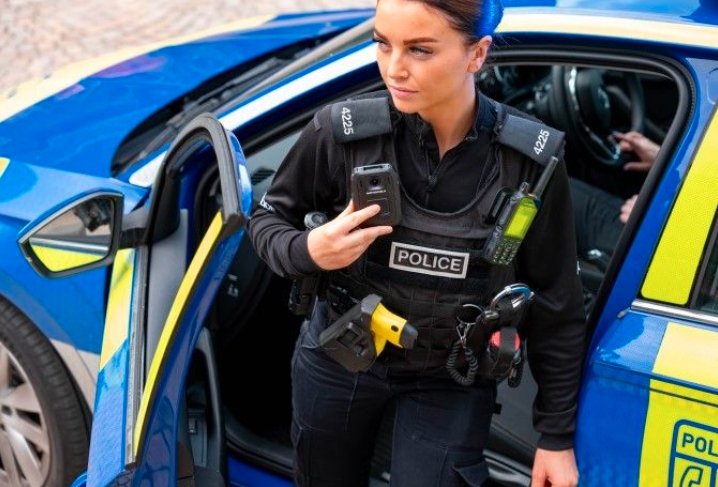As Police Scotland rolls out body-worn cameras for frontline officers by 2026, a recent review highlights a significant gap in understanding their real-world impact on policing and public trust.
The $13 Million Gamble: A New Era for Police Scotland
Police Scotland is set to introduce body-worn cameras for all frontline officers by the autumn of 2026, at a steep cost of over £13 million. This move makes Scotland one of the last UK regions to embrace this technology. Although armed officers in Scotland have used the technology since 2021, during the UN climate conference Cop26, the upcoming nationwide deployment is expected to significantly reshape the landscape of policing in Scotland.
Interestingly, Scotland is late to the game compared to other forces. Devon and Cornwall Police pioneered the use of body-worn cameras in the early 2000s. With this delayed adoption, Police Scotland has the advantage of learning from other forces’ successes and mistakes. However, a closer look at the data reveals that the effectiveness of body-worn video (BWV) remains shrouded in uncertainty.

The Promised Benefits: Increased Transparency and Protection
The concept behind body-worn cameras is compelling: they aim to provide clear evidence of police-citizen interactions, protect officers from false accusations, and enhance public accountability. These cameras are viewed as a way to improve the transparency of policing and bolster confidence in law enforcement, especially in a climate of rising mistrust.
On paper, the advantages seem obvious. BWV could help gather indisputable evidence for investigations, potentially streamlining complaint resolution, and even reducing the number of officers required in court. Additionally, some argue that the presence of a camera could discourage aggressive behavior, both from police officers and the public.
However, there’s a troubling gap between theory and reality. Despite the promising potential of these devices, there is a lack of conclusive, robust data supporting their actual impact. Studies and surveys reveal a public preference for the technology, often shaped by a general belief in its benefits—without hard evidence to back up those claims.
-
Benefits associated with BWV:
-
Enhanced transparency in policing
-
Improved accountability for officers’ actions
-
Clearer evidence for investigations and legal processes
-
Is Body-Worn Video Really Effective?
In the wake of its widespread adoption in various sectors, body-worn video has become a fixture not only in police forces but also in industries like security, retail, and healthcare. The idea is simple: capture interactions as they unfold, providing a reliable account of events.
However, despite its prevalence, there is little solid evidence to indicate that BWV consistently leads to better outcomes. There are no standardized, reliable metrics that demonstrate whether its use has significantly reduced violent incidents or complaints against police officers.
One of the key assumptions driving the implementation of this technology is that it will offer an “objective” view of events, particularly in contentious situations. But the question remains: Does the technology truly deliver on that promise?
The answer is far from clear. While the presence of a camera may deter some hostile interactions, other studies suggest it may not be as effective in resolving conflicts or improving the overall public perception of policing.
Accountability and Misuse Concerns
While the idea of BWV helping to improve police accountability sounds good in theory, there are some serious concerns about how effectively the technology is implemented. For instance, officers have the discretion to switch off their cameras, which can lead to selective footage that might not tell the whole story. A BBC investigation in 2023 uncovered over 150 cases of camera misuse by officers in England and Wales.
This raises important questions about how effective the technology will be if there are no clear protocols in place to prevent such misuse. If the footage isn’t captured accurately or in its entirety, the supposed accountability promised by BWV may be undermined.
To address this, Police Scotland will need to implement stringent oversight procedures. This is where many police forces across the UK fall short. Only a handful have established independent oversight mechanisms to ensure that body-worn cameras are used appropriately. The Scottish Police Authority is slated to oversee the technology, but it remains to be seen how effective this process will be.
Racial Tensions and Privacy Concerns
Body-worn cameras have the potential to exacerbate existing societal tensions. Research from North America suggests that minority communities, in particular, may view the technology with skepticism. They may feel that it doesn’t enhance accountability but instead reinforces the power dynamics between police and marginalized groups. This is a particularly crucial issue, as tensions between police forces and minority communities remain high in many parts of the world.
Moreover, the use of body-worn cameras comes with significant privacy concerns. With newer models able to integrate facial recognition technology, the role of these devices could expand beyond just recording interactions. Instead of merely serving as a tool for post-incident review, cameras could enable real-time surveillance, raising ethical questions about consent and the extent to which individuals’ privacy is protected.
These developments could make the technology more invasive, further deepening concerns about surveillance in public spaces.
| Technology Issue | Concern | Potential Impact |
|---|---|---|
| Facial Recognition Software | Potential for misuse in real-time surveillance | Increased risk of discrimination and privacy violations |
| Officer Discretion in Camera Usage | Misuse or lack of footage when needed | Undermines the credibility of evidence |
The Path Forward for Police Scotland
Despite the numerous challenges, Police Scotland’s cautious approach to the rollout of body-worn cameras is commendable. By taking the time to assess the effectiveness of the technology, they have avoided the pitfalls that other forces have encountered.
However, more needs to be done. If body-worn cameras are to have the desired effect, there must be clear protocols in place for their use. Officers need proper training to ensure they use the technology in a way that respects citizens’ privacy and produces reliable footage. Additionally, the public must have confidence that the technology will be used fairly, without reinforcing existing power imbalances or creating new forms of discrimination.
As Police Scotland moves toward full implementation, the debate over the effectiveness and ethics of body-worn video will continue. For now, though, the jury is still out on whether these cameras will truly deliver the transparency and accountability that many hope they will.


















